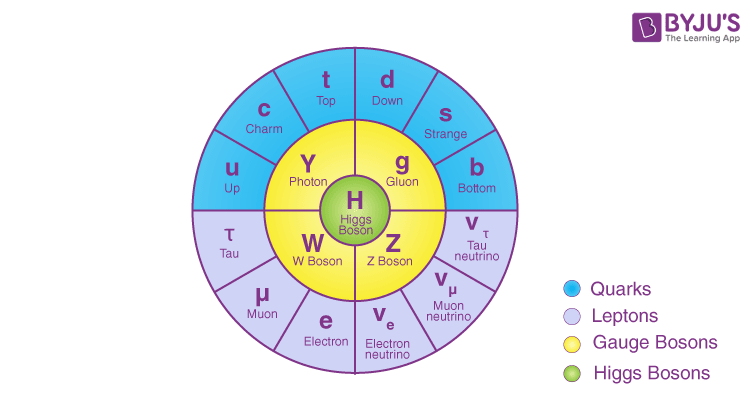The Higgs boson is often described as a fundamental particle that serves as a keystone in the Standard Model of particle physics. Essentially, it is an excitation of the Higgs field, which permeates the universe. Understanding the Higgs boson involves traversing various concepts and theories that underpin modern physics, including the nature of mass, the structure of the universe, and the fundamental forces that govern matter.
To appreciate the significance of the Higgs boson, one must first comprehend the Higgs field itself. Proposed in the 1960s by physicist Peter Higgs and his contemporaries, the Higgs field is an omnipresent field that interacts with elementary particles. This field is not merely a theoretical construct; it is integral in explaining why particles possess mass. In a vacuum devoid of this field, particles like electrons or quarks would be massless, rendering the formation of atoms, and consequently, matter itself, impossible.
The discovery of the Higgs boson in 2012 at the Large Hadron Collider was monumental. This particle confirmed the existence of the Higgs field, solidifying theories that had persisted for decades. It is crucial to note that the Higgs boson itself is unstable; its existence is fleeting, decaying into other particles almost immediately after being produced. This transitory state necessitates sophisticated experimental setups to detect its presence indirectly.
The Higgs mechanism is the process through which particles acquire mass. Through interactions with the Higgs field, particles gain mass proportionate to the strength of their coupling to the field. A more substantial interaction results in greater mass, thus establishing a direct linkage between the Higgs field and the mass of fundamental particles. For instance, while the photon, responsible for electromagnetic interactions, remains massless, other particles such as the W and Z bosons, which mediate weak nuclear forces, obtain mass through this mechanism.
Moving beyond the mechanisms of particle physics, the implications of the Higgs boson extend to broader cosmological discussions. The existence of the Higgs field plays a pivotal role in the evolution of the cosmos, particularly during the phase transitions of the early universe. These transitions influenced the symmetry breaking that led to the differentiation of forces and the formation of structure in the universe. Thus, the Higgs boson is not merely an abstract concept; it is a critical component in understanding the very fabric of reality.
Following the discovery of the Higgs boson, a plethora of questions and investigations arose concerning its properties and implications. Researchers endeavor to delineate the characteristics of the Higgs boson, such as its mass, spin, and interactions. Current measurements indicate that the Higgs boson has a mass of approximately 125 giga-electronvolts (GeV). This value is intriguingly aligned with predictions but continues to evoke speculation regarding physics beyond the Standard Model. The relatively high mass of the Higgs boson could signal the presence of unknown particles or forces, hinting at a richer tapestry of the universe yet to be uncovered.
Theoretical physicists have posited various extensions to the Standard Model that might incorporate the Higgs boson. Superstring theory, for instance, attempts to reconcile gravitational forces with quantum mechanics, offering a potential framework where the Higgs particle could interact with hidden dimensions. Additionally, theories regarding dark matter and energy often incorporate the Higgs field, suggesting that it could play a role in understanding these elusive components of our universe.
Moreover, the implications of the Higgs boson extend beyond theoretical musings, influencing particle experiments and collider physics. The discovery of the Higgs boson prompted a renewed focus on precision measurements within particle physics. As researchers continue to scrutinize the Higgs boson’s properties, subtle anomalies can lead to new physics discoveries. Each experimental endeavor not only broadens our understanding of the Higgs boson itself but also serves as a gateway to exploring fundamental questions regarding the nature of the universe, from the smallest particles to the cosmic scale.
The technological advancements catalyzed by the pursuit of Higgs research have far-reaching consequences beyond the realm of particle physics. Innovations developed for particle collision experiments have spilled over into other scientific domains, including medical imaging, materials science, and computational algorithms. The investment in the study of the Higgs boson thus illustrates a fascinating intertwining relationship between fundamental research and practical applications in everyday life.
Ultimately, the quest to understand the Higgs boson and its associated field encapsulates a grand narrative of scientific curiosity and innovation. It embodies humanity’s pursuit of knowledge, unveiling the intricate complexities underlying our universe. As research in this field progresses, it promises to foster a deeper understanding of the fundamental laws governing matter and energy, possibly leading to revolutionary breakthroughs in science and technology.
In conclusion, the Higgs boson serves as a linchpin in our current understanding of particle physics, offering profound insights into the nature and origin of mass. It invites both scientists and enthusiasts alike to delve deeper into the realms of theoretical frameworks, cosmological evolution, and the myriad applications that arise from such discoveries. The exploration of the Higgs boson, therefore, remains an enthralling and transformative journey, one that continues to inspire future generations of physicists.












